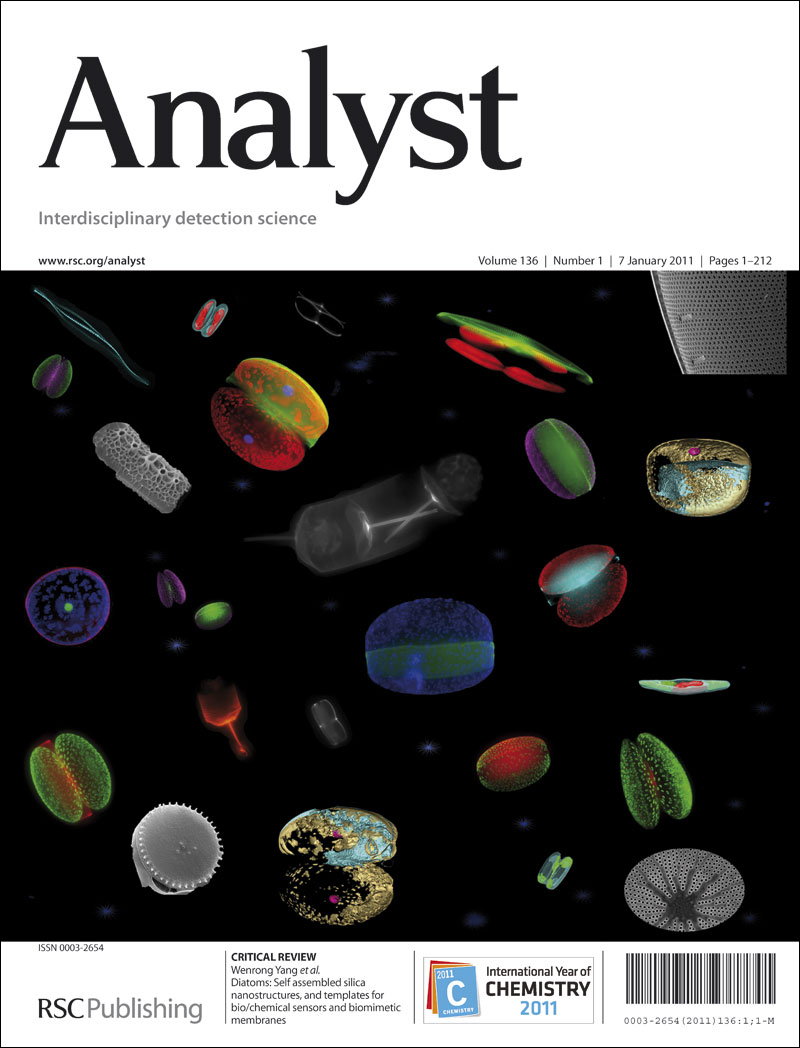Research on cavity-driven control methods for concentration gradient microdroplets with high precision and stability
IF 3.6
3区 化学
Q2 CHEMISTRY, ANALYTICAL
引用次数: 0
Abstract
Microfluidic chip technology, an emerging interdisciplinary field, enables precise control of fluids at micro- and nano-scales and is widely applied in biomedicine, chemical analysis, and drug screening. This study investigates the effect of the parameters of chip geometry and the flow rate of fluid on the performance of the droplet concentration gradient generator using a cave-based microfluidic chip structure through numerical simulation and experimental verification. Finite element simulation software, equipped with laminar flow, phase field, and dilute substance transfer modules, was employed to analyze the impact of geometric parameters (cavity number, cavity radius, contact length between the cavity and the central channel, and cavity interval length) on the concentration gradient curve. Additionally, the effect of the fluid flow rate on the frequency, size, and concentration of the generated microdroplets was explored. Results indicate that the number, radius, and contact length of cavities significantly affect the concentration gradient curve, while the interval length has a minimal impact. Precise control of droplet concentration, generation frequency, and size can be achieved by adjusting the flow rates of the dispersed phase and the continuous phase. This study provides a theoretical basis for the design and optimization of concentration gradient microfluidic chips and promotes the application of concentration gradient microdroplet technology in high-throughput drug screening, biological detection and chemical analysis.

高精度、稳定的浓度梯度微滴腔驱动控制方法研究
微流控芯片技术是一门新兴的交叉学科,能够在微纳米尺度上对流体进行精确控制,在生物医学、化学分析、药物筛选等领域有着广泛的应用。通过数值模拟和实验验证,研究了基于洞型微流控芯片结构的芯片几何参数和流体流速参数对液滴浓度梯度发生器性能的影响。采用有限元仿真软件,安装层流、相场、稀质传递模块,分析几何参数(空腔数、空腔半径、空腔与中心通道接触长度、空腔间隔长度)对浓度梯度曲线的影响。此外,还探讨了流体流速对生成微滴的频率、大小和浓度的影响。结果表明,空腔的数量、半径和接触长度对浓度梯度曲线有显著影响,而间隔长度对浓度梯度曲线的影响较小。通过调节分散相和连续相的流量,可以精确控制液滴浓度、产生频率和大小。本研究为浓度梯度微流控芯片的设计和优化提供了理论依据,促进了浓度梯度微滴技术在高通量药物筛选、生物检测和化学分析等领域的应用。
本文章由计算机程序翻译,如有差异,请以英文原文为准。
求助全文
约1分钟内获得全文
求助全文
来源期刊

Analyst
化学-分析化学
CiteScore
7.80
自引率
4.80%
发文量
636
审稿时长
1.9 months
期刊介绍:
"Analyst" journal is the home of premier fundamental discoveries, inventions and applications in the analytical and bioanalytical sciences.
 求助内容:
求助内容: 应助结果提醒方式:
应助结果提醒方式:


